Absolute pressure gauges for measuring pressure relative to a perfect vacuum. Absolute reference pressure gauges are used in applications where a system pressure is not influenced by changes in atmospheric pressure.
Absolute reference pressure gauges provide critical pressure measurements relative to a perfect vacuum, ensuring readings are completely independent of ambient atmospheric pressure variations. This design feature is particularly vital for applications requiring high stability and precision over extended periods, such as detailed leak testing of components where subtle pressure changes must be accurately identified, or in controlled environments like vacuum packaging and altitude simulation. By utilizing a sealed internal vacuum reference, these gauges offer engineers and technicians reliable and repeatable data essential for quality control, research, and process management where external barometric conditions must not influence the outcome.
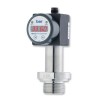 DS200P Sanitary Low Range Pressure Gauge, Switch and Sensor - All in one electronic switch, gauge and sensor designed specifically for use in the food, drink and biomedical industry for measuring process pressures.
DS200P Sanitary Low Range Pressure Gauge, Switch and Sensor - All in one electronic switch, gauge and sensor designed specifically for use in the food, drink and biomedical industry for measuring process pressures.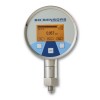 DM01 Multi-Range High Accuracy Pressure Gauge - High precision digital pressure gauge with 0.05% full scale accuracy, exchangeable pressure range modules from 100 mbar (1.5 psi) up to 400 bar (6000 psi).
DM01 Multi-Range High Accuracy Pressure Gauge - High precision digital pressure gauge with 0.05% full scale accuracy, exchangeable pressure range modules from 100 mbar (1.5 psi) up to 400 bar (6000 psi).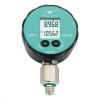 LEO3 Current or Digital Output Pressure Gauge - LCD digital pressure gauge powered externally by a 2 wire series 4-20mA current loop or a digital interface.
LEO3 Current or Digital Output Pressure Gauge - LCD digital pressure gauge powered externally by a 2 wire series 4-20mA current loop or a digital interface.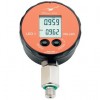 LEO1 (Ei) Digital Pressure Gauge - Battery powered digital gauge with an accuracy of 0.1% full scale in pressure ranges from -1 to 3 bar up to 1000 bar.
LEO1 (Ei) Digital Pressure Gauge - Battery powered digital gauge with an accuracy of 0.1% full scale in pressure ranges from -1 to 3 bar up to 1000 bar.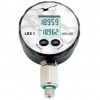 LEX1 (Ei) High Accuracy Digital Pressure Gauge - High precision digital pressure gauge with an accuracy of 0.05% full scale in pressure ranges from 0...30 mbar up to 0...1000 bar.
LEX1 (Ei) High Accuracy Digital Pressure Gauge - High precision digital pressure gauge with an accuracy of 0.05% full scale in pressure ranges from 0...30 mbar up to 0...1000 bar.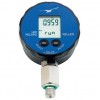 LEO Record (Ei) Pressure Data Logger - LEO Record combined digital manometer & pressure data logging instrument for recording pressures & temperatures that can store up to 57,000 readings.
LEO Record (Ei) Pressure Data Logger - LEO Record combined digital manometer & pressure data logging instrument for recording pressures & temperatures that can store up to 57,000 readings.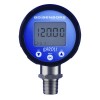 Baroli 02 Precision Digital Pressure Gauge - Precision digital pressure gauge with ranges from 100 mbar (1.5 psi) up to 600 bar (9000 psi) for measuring to an accuracy of 0.125% FS BSL.
Baroli 02 Precision Digital Pressure Gauge - Precision digital pressure gauge with ranges from 100 mbar (1.5 psi) up to 600 bar (9000 psi) for measuring to an accuracy of 0.125% FS BSL.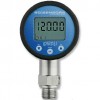 Baroli 02P Low Range Flush Diaphragm Digital Pressure Gauge - All stainless steel 316L hygienic digital display pressure gauge for measuring low range pressures with ranges from 0-100 mbar up to 0-40 bar.
Baroli 02P Low Range Flush Diaphragm Digital Pressure Gauge - All stainless steel 316L hygienic digital display pressure gauge for measuring low range pressures with ranges from 0-100 mbar up to 0-40 bar.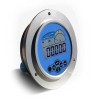 ADT681 Digital Pressure Gauge - The ADT681 digital pressure gauge family covers a wide range of pressures from as low as 1 inH20 differential to as high as 36,000 psi gauge.
ADT681 Digital Pressure Gauge - The ADT681 digital pressure gauge family covers a wide range of pressures from as low as 1 inH20 differential to as high as 36,000 psi gauge.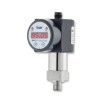 DS200 Combined Pressure Switch, Gauge and Sensor - Three in one electronic pressure switch, digital pressure gauge and pressure sensor with pressure ranges from 100 mbar up to 600 bar (1.5 to 9000 psi).
DS200 Combined Pressure Switch, Gauge and Sensor - Three in one electronic pressure switch, digital pressure gauge and pressure sensor with pressure ranges from 100 mbar up to 600 bar (1.5 to 9000 psi).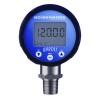 Baroli 05 Industrial Digital Pressure Gauge - Digital pressure gauge with ranges from 0.6 bar (9 psi) up to 600 bar (9000 psi) gauge or absolute and an accuracy of 0.25% full scale.
Baroli 05 Industrial Digital Pressure Gauge - Digital pressure gauge with ranges from 0.6 bar (9 psi) up to 600 bar (9000 psi) gauge or absolute and an accuracy of 0.25% full scale.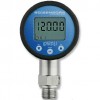 Baroli 05P High Range Flush Diaphragm Digital Pressure Gauge - Battery powered pressure gauge with exposed diaphragm for measuring high pressures of viscous fluids or media which requires high level of cleanliness.
Baroli 05P High Range Flush Diaphragm Digital Pressure Gauge - Battery powered pressure gauge with exposed diaphragm for measuring high pressures of viscous fluids or media which requires high level of cleanliness.
Find out more about Absolute Reference Pressure Gauges to determine which product options and capabilities will best meet your application requirements.
Absolute reference pressure gauges are distinguished by their fundamental design, which measures pressure relative to a true zero point, a perfect vacuum. This internal, permanently sealed vacuum chamber acts as an unvarying reference, ensuring that the pressure readings are solely indicative of the system pressure being monitored, completely isolated from any fluctuations in ambient atmospheric pressure. This intrinsic characteristic is paramount in applications demanding high precision and repeatability, where even minor barometric changes could otherwise introduce significant errors or misinterpretations if a gauge pressure device were used.
The critical advantage of using an absolute pressure reference becomes particularly evident in processes or tests conducted over extended durations. For instance, in manufacturing or research environments, monitoring the integrity of sealed systems or components through leak testing often relies on the pressure decay method. Over several hours or even days, shifts in atmospheric pressure can be substantial enough to either mask a genuine small leak or falsely indicate a leak when none exists if the measurement is not made against a stable absolute reference. By utilizing an absolute pressure gauge, engineers and technicians can confidently attribute any detected pressure change directly to the performance of the component under test, ensuring accurate quality control for items such as sealed electronic enclosures, fluid power components, or specialized packaging.
Beyond leak detection, absolute reference pressure gauges find essential use in various specialized industrial and research scenarios. In vacuum packaging lines for food or pharmaceuticals, they ensure the correct vacuum levels are achieved for product preservation and seal integrity. Altitude simulation chambers, used in aerospace and automotive testing, rely on absolute pressure gauges to accurately replicate specific atmospheric conditions. Furthermore, in chemical and process engineering, certain reactions are highly sensitive to absolute pressure, making these gauges indispensable for consistent process control. The stability of the sealed vacuum reference within these gauges is a key design feature, crucial for maintaining measurement accuracy over the instrument’s lifespan, especially in critical applications such as environmental monitoring stations measuring barometric pressure or in laboratories conducting vapor pressure tests.
